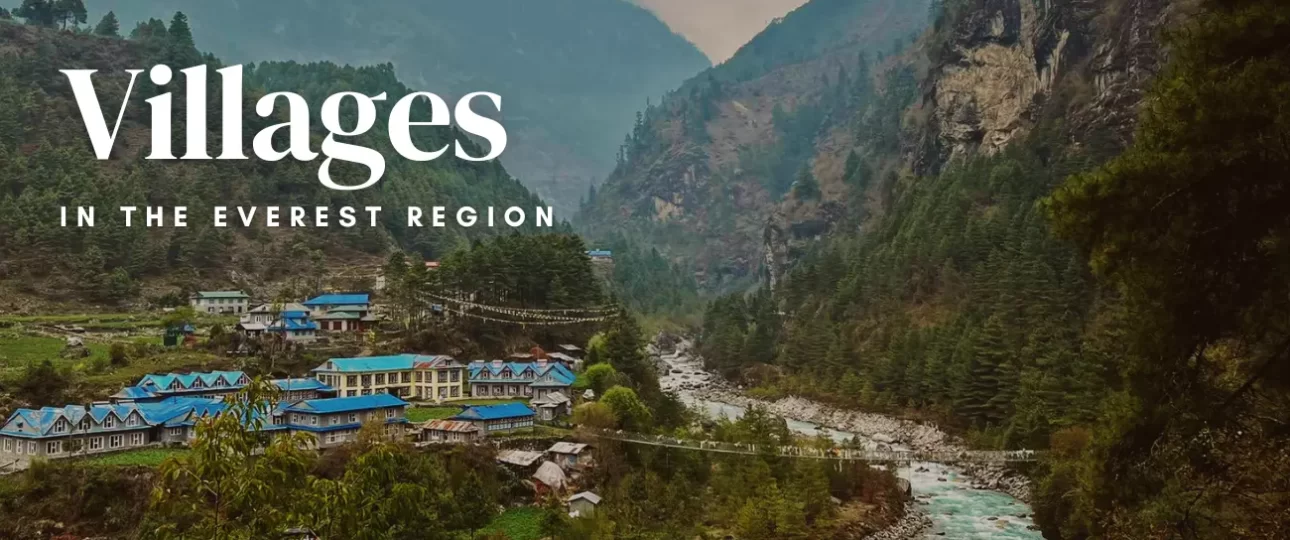Villages in the Everest Region
The Everest Region, also known as the Khumbu Region, is famous for its breathtaking mountains, including the world’s highest peak, Mount Everest. But beyond the towering peaks and stunning landscapes, this region is home to a network of charming villages that embody the rich culture, traditions, and hospitality of the Sherpa people. If you’re planning a trek in the Everest Region or simply interested in learning more about life in this remote part of Nepal, here’s a deep dive into the villages that make the Khumbu region so special.
Namche Bazaar – The Gateway to Everest
Namche Bazaar is often considered the heart of the Khumbu Region and serves as a vital stop for trekkers heading to Everest Base Camp. Situated at 3,440 meters, Namche is a bustling market town where trekkers can acclimatize and stock up on supplies.
Namche is a vibrant hub with more than 50 lodges, hotels, and teahouses catering to trekkers. It also boasts a surprising number of restaurants and cafes, including bakeries that serve freshly baked goods—such as the famous Namche bakery, where trekkers can indulge in delicious pastries while admiring panoramic mountain views. The village even has a few bars and pubs, perfect for socializing with fellow trekkers. You’ll also find gear shops, internet cafes, and ATMs for added convenience.
The town is also a great place to learn about Sherpa culture. You’ll find the Sherpa Culture Museum and the Everest Photo Gallery here, both offering fascinating insights into the history and achievements of the Sherpa people.
Besides soaking in the views and culture, there are various hikes you can take to acclimatize, such as a trek to Everest View Hotel or a day hike to Khumjung Village. Don’t forget to explore the Saturday market, where traders from all over the region gather to sell goods.
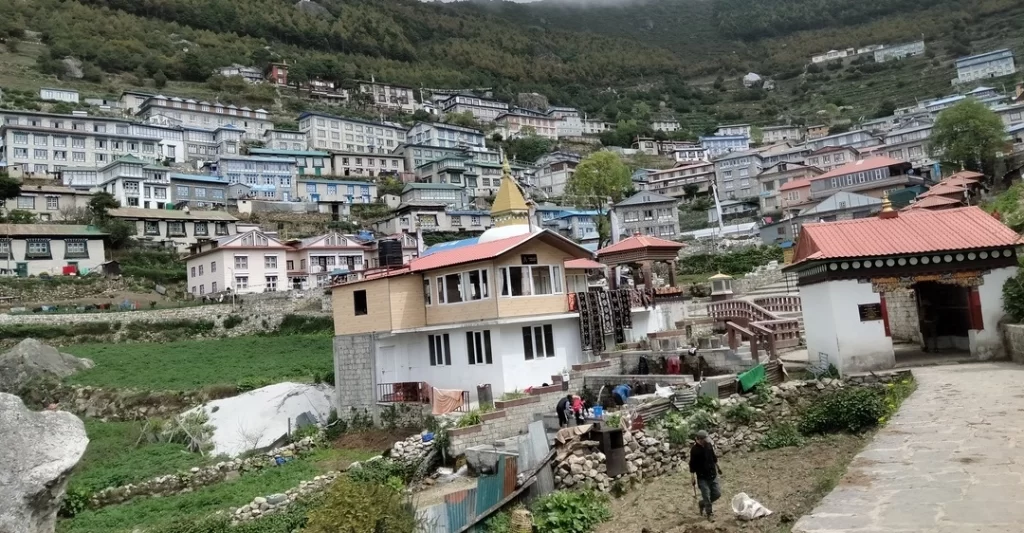
Tengboche – A Spiritual Village
Tengboche is renowned for its monastery, which is the largest in the region and plays a significant spiritual role for the Sherpas. Sitting at 3,867 meters, it offers a serene stop on the trek to Everest Base Camp.
The Tengboche Monastery is a sacred place for Sherpas and holds an annual festival called Mani Rimdu, where locals and visitors can experience Buddhist rituals and dances.
While Tengboche is smaller compared to Namche, it offers a few well-maintained lodges and teahouses, typically about 5-6 options for accommodation. There are also a couple of teahouses with attached restaurants where trekkers can enjoy simple meals like dal bhat, noodles, and soups, often with a stunning backdrop of Ama Dablam.
Dingboche – The High-Altitude Hamlet
Dingboche is situated at 4,410 meters and serves as an acclimatization stop for trekkers heading to Everest Base Camp or Island Peak.
Dingboche is a perfect place to adjust to the high altitude. The village has around 10-12 lodges and teahouses, providing basic yet comfortable accommodations. Some of these places even have solar-powered hot showers and Wi-Fi facilities, though internet access can be limited.
The dining halls in the lodges often have large windows offering panoramic views of the surrounding mountains, including Lhotse and Ama Dablam. You’ll also find a few cafes and bakeries where trekkers can relax and enjoy a hot cup of coffee.
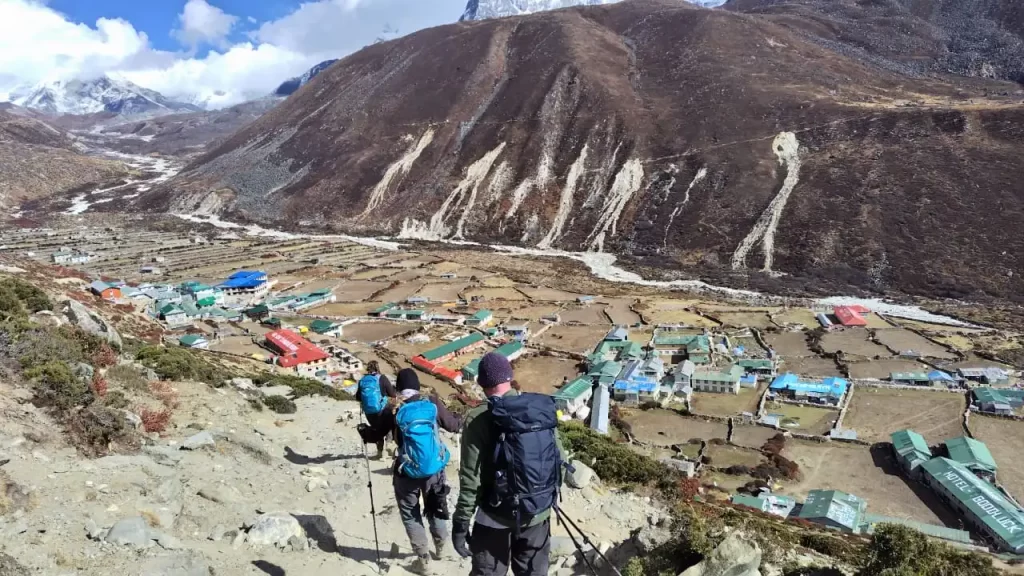
Phakding – The First Stop on the Trek
Phakding is a small village that lies on the Dudh Koshi River and is typically the first overnight stop for trekkers coming from Lukla.
At 2,610 meters, Phakding is a relatively easy stop that allows trekkers to gently acclimatize before ascending higher. With around 20-25 lodges and teahouses, Phakding offers plenty of options for accommodation. Most of these lodges have attached restaurants serving local and international cuisine.
You’ll also find a few small shops selling basic trekking supplies and snacks. Although Phakding is a quiet village, it provides all the essential facilities trekkers need to kick off their Everest adventure.
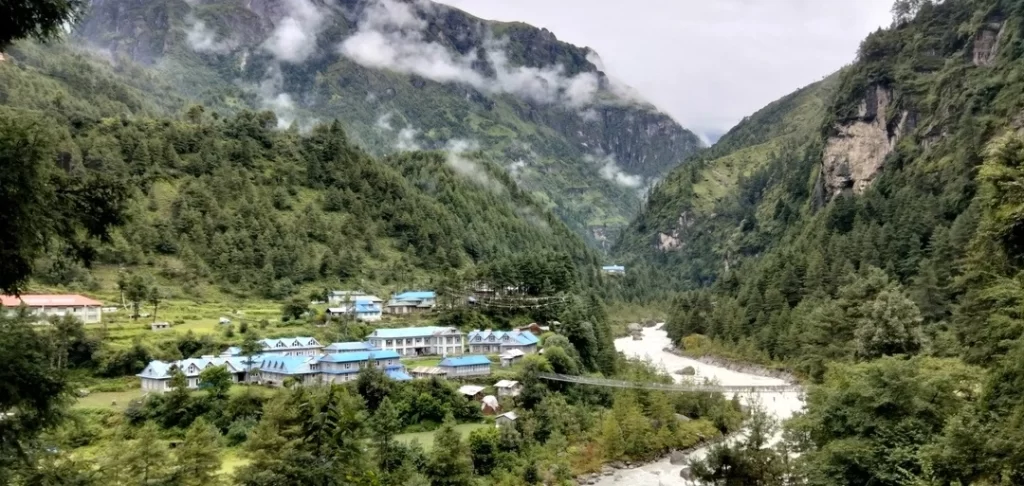
Khumjung – The Hidden Gem
Khumjung, located above Namche Bazaar, is one of the largest villages in the Khumbu Region. It’s known for its connection to Sir Edmund Hillary and the Sherpa culture.
Sir Edmund Hillary, the first man to summit Mount Everest, built a school in Khumjung as part of his philanthropic efforts. Today, this school stands as a symbol of education in remote regions.
Khumjung Monastery is famous for housing what is believed to be the scalp of a yeti. Whether you believe in the legend or not, it’s a fascinating piece of local folklore.
Khumjung has around 10-15 lodges and teahouses, offering clean and comfortable accommodations. The village also has a few local restaurants where you can try traditional Sherpa dishes. You won’t find the same bustling atmosphere as Namche, but Khumjung is a great place to experience authentic Sherpa hospitality in a quieter setting.
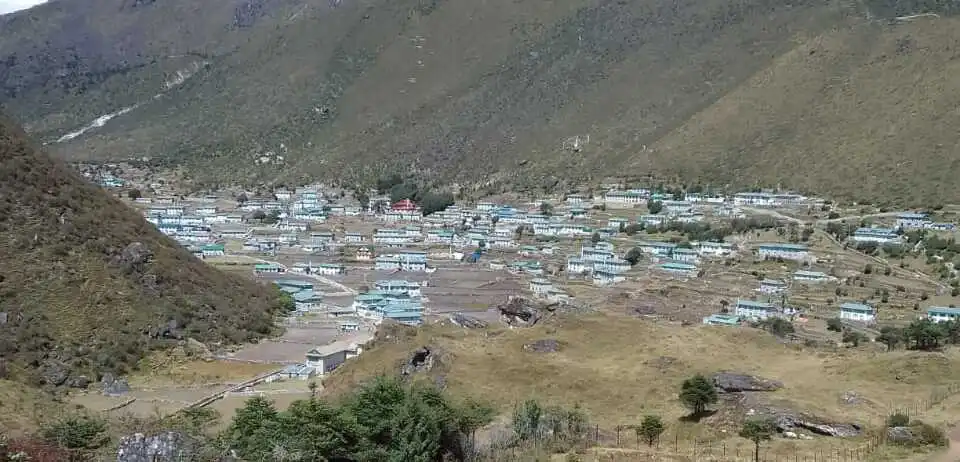
Lukla – The Gateway to the Khumbu
Lukla is home to Tenzing-Hillary Airport, one of the most thrilling airports in the world. It’s the starting point for most trekkers heading to the Everest Region.
The airport, named after the first climbers to conquer Everest, is known for its short and steep runway, making it an adventure in itself.
Lukla is the primary hub for trekkers, and as a result, it has around 30-35 hotels, lodges, and teahouses, providing a wide range of accommodations. You’ll also find plenty of restaurants, cafes, and bakeries, offering everything from hearty breakfasts to quick snacks before your trek begins. The village has a few shops where you can buy last-minute trekking gear or snacks.
Monjo – The Entrance to Sagarmatha National Park
Monjo is a peaceful village situated just before the entrance to Sagarmatha National Park, a UNESCO World Heritage Site.
This stop offers trekkers a quieter alternative to the busier villages like Phakding on the first day and provides stunning views of the surrounding mountains and forests.
Monjo serves as the gateway to the national park, which is home to some of the most unique flora and fauna in the Himalayas, including the elusive snow leopard. It is a major checkpoint for all the trekkers coming in and out of the Khumbu region.
It has a handful of teahouses and lodges, about 5-10 in total. They offer basic yet comfortable accommodation, and there are a few restaurants where trekkers can enjoy a meal before entering the park.
Lobuche – The Final Resting Village Before Everest Base Camp
Lobuche sits at 4,940 meters and is one of the last stops before reaching Everest Base Camp.
Trekking through Lobuche can be challenging due to the altitude, but the views of Nuptse, Pumori, and Lobuche Peak make it worthwhile.
Lobuche has around 6-8 teahouses, most of which offer basic amenities like dormitory-style rooms, shared bathrooms, and dining halls with limited food options. However, the warmth of a hot meal in these lodges is often enough to keep spirits high, especially after a long day of trekking.
Pangboche – Home to the Oldest Monastery in the Region
Pangboche is another spiritual village in the Khumbu Region, known for the Pangboche Monastery.
The Pangboche Monastery is the oldest in the Khumbu Region and holds deep cultural and religious significance for the Sherpa community.
Pangboche offers around 10-12 lodges and teahouses, with a few attached restaurants. Most accommodations are simple but offer warm hospitality and delicious meals, making it a popular stop for trekkers.
Thame – Off the Beaten Path
Thame is a lesser-visited village that’s famous for its legendary Sherpa climbers, including Tenzing Norgay.
Many of the world’s greatest mountaineers, including Tenzing Norgay, hail from Thame, making it a must-visit for those interested in mountaineering history.
Thame has about 5-7 teahouses and is known for offering a more tranquil experience than some of the busier villages. There are a few small restaurants, and the village is a great place to unwind and take in the serene surroundings.
Gokyo – The Village by the Lakes
Gokyo is located near a series of stunning turquoise lakes, making it one of the most beautiful villages in the Everest Region.
The Gokyo Lakes are considered sacred by the Sherpas and are one of the highest freshwater lake systems in the world.
Gokyo has around 8-10 lodges and teahouses, and most of these places offer rooms with stunning views of the lakes. There are also a couple of restaurants and cafes where you can enjoy simple meals while taking in the beauty of the surroundings.
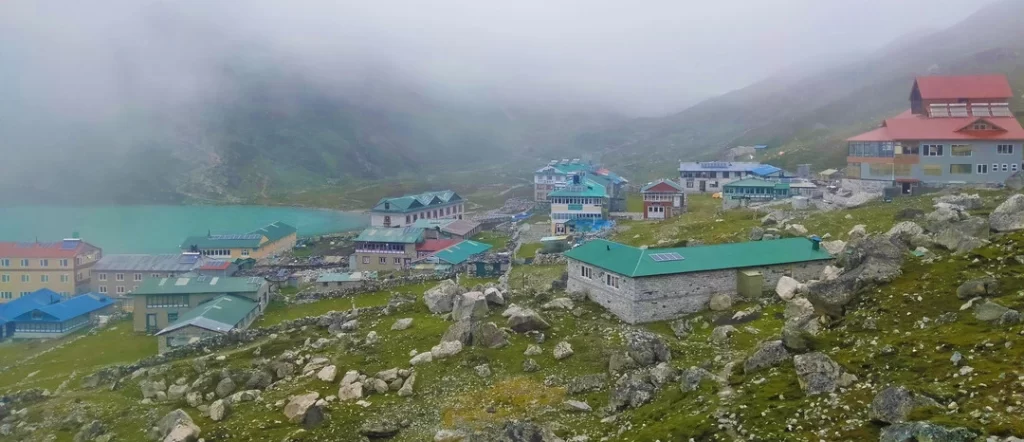
Conclusion
The villages in the Everest Region are not just stopping points along the trek to Everest Base Camp; they are gateways to unique cultural experiences, stunning landscapes, and warm Sherpa hospitality. Whether you’re staying in a basic teahouse or enjoying a coffee in one of Namche’s cafes, these villages provide comfort and a sense of community that enhance the trekking experience. Each village has its own character, from bustling Namche to serene Thame, offering trekkers a diverse range of experiences and insights into life in the high Himalayas.
FAQs
1. What is the best time to visit the villages in the Everest Region?
The best time to visit is during the pre-monsoon (March to May) and post-monsoon (September to November) seasons.
2. Do I need a guide to explore the Everest villages?
While it’s possible to trek independently, having a guide can enhance your experience, provide local insights, and ensure safety.
3. How challenging is trekking to these villages?
Trekking in the Everest Region can be moderately challenging due to high altitudes, but the trails are well-maintained, and many lodges offer comfortable stays.
4. What can I expect in terms of accommodation?
You’ll find a range of accommodations, from basic teahouses to more comfortable lodges, depending on the village.
5. How do I experience Sherpa culture during my trek?
To experience Sherpa culture, visit local monasteries, interact with villagers, and participate in festivals like Mani Rimdu.
